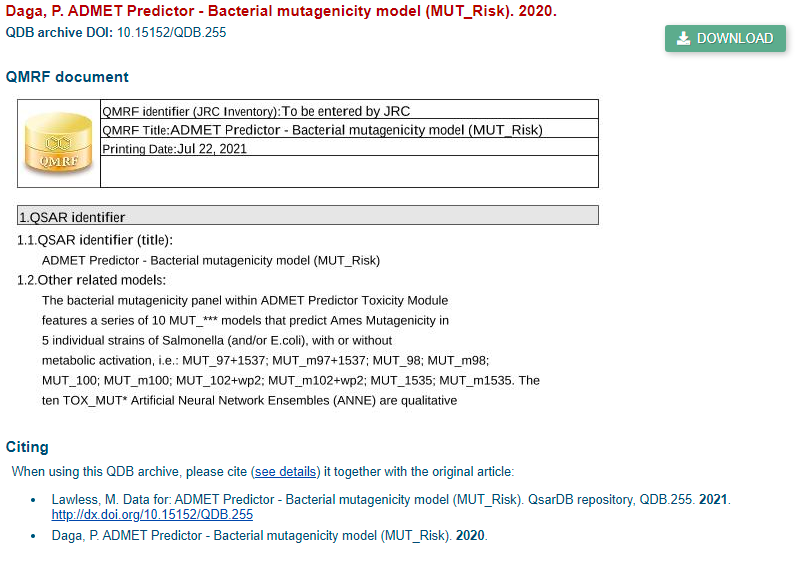Support for QMRF documents in QsarDB
Many proprietary QSAR models are readily available and easy to use, but often lack transparency and are like “black boxes” to end users. QSAR Model Reporting Format (QMRF)[1] documents address this issue by providing a template for summarizing key information on QSAR models, where the information is structured according to the OECD (Q)SAR validation principles. In order to improve the availability and findability of QMRFs, we improved support for QMRFs in the QsarDB repository.
Now it is possible to upload QMRF documents for models where full data can not be provided in the QsarDB format. For example, models in commercial software packages. The repository accepts QMRFs for models that are implemented in well established open or proprietary software packages. Both PDF and XML representations must be uploaded, so that the model information is both human and machine readable. QMRF uploads in QsarDB are published as technical data documents and receive DOI-s and become in this way citable documents in scientific publications and official documents. Read instructions on how to upload QMRFs to the QsarDB.
In QsarDB, we see that there is no central hub of information about QSAR/QSPR models developed in academia and industry. With this new development and expanded support for QMRF, we hope to fill this gap and to provide a better service to the community in making information about QSAR models more widely available.
Full information on QSAR models is extremely important for transparency, reproducibility and trust towards these models. Therefore QsarDB archive format is an important cornerstone in our repository development and we encourage you to make submissions in this format when the QSAR model underlying data is not classified. For submissions in the QsarDB format, QMRFs can be added as additional documents.
Partial screenshot from “QsarDB Item view” with citing instructions

Your QsarDB team.
[1] QMRF data format